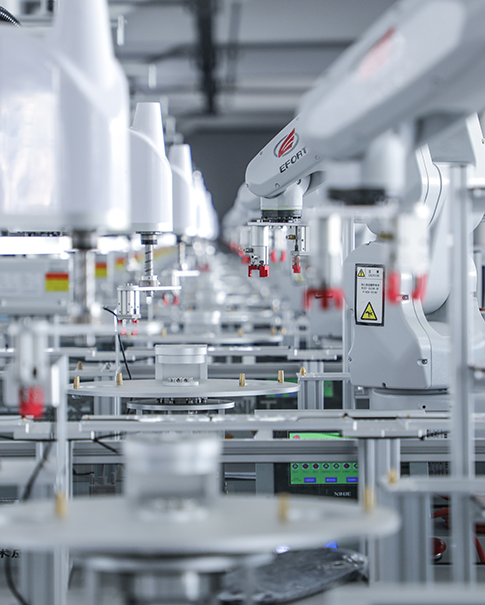The 1747-L553 is a Central Processing Unit (CPU) module belonging to the SLC 500 and SLC 5/05 series. Designed for industrial automation, this processor is known for its reliability, flexibility, and efficient performance in controlling various automation processes. One of the key advantages of the 1747-L553 is its built-in CMOS RAM, which supports battery backup to retain critical data in case of power loss. Additionally, it can be expanded with an external memory module (1747-M13), providing an extra 64 KB of memory for more complex applications. This module also features multiple communication options, including an Ethernet channel and a configurable RS-232, DH-485, DF1, or ASCII port, making it adaptable to different industrial networking needs. In this article, we will explore the key features, specifications, applications, advantages, and maintenance tips for the 1747-L553 CPU module, helping you understand why it remains a popular choice in industrial automation.
The 1747-L553 is packed with features that make it suitable for a wide range of industrial automation tasks. Below are some of its most notable characteristics:
1. Processor and Memory
Built-in CMOS RAM with battery backup for data retention.
Supports an optional 1747-M13 memory module, expanding memory by 64 KB.
Efficient processing speed for real-time control applications.
2. Communication Capabilities
Ethernet port for high-speed network connectivity.
A configurable RS-232, DH-485, DF1, or ASCII serial port for flexible communication with other devices.
Supports multiple industrial protocols for seamless integration.
3. I/O Capacity
Can handle a variety of digital and analog I/O modules, allowing for scalable system configurations.
Suitable for small to medium-sized automation projects.
4. Robust Design
Designed for industrial environments, with resistance to electrical noise and vibrations.
Reliable performance in harsh conditions.
These features make the 1747-L553 a versatile and dependable choice for automation engineers.
Applications of the 1747-L553 in Industrial Automation
The 1747-L553 CPU module is widely used in various industries due to its flexibility and reliability. Some common applications include:
1. Manufacturing Automation
Controls assembly lines, conveyor systems, and robotic arms.
Ensures precise timing and coordination in production processes.
2. Material Handling Systems
Manages sorting, packaging, and palletizing systems.
Optimizes logistics and warehouse automation.
3. Water and Wastewater Treatment
Monitors and controls pumps, valves, and filtration systems.
Ensures efficient and automated water processing.
4. Energy Management
Used in HVAC systems, power distribution, and renewable energy controls.
Helps in monitoring energy consumption and improving efficiency.
5. Food and Beverage Industry
Regulates mixing, filling, and bottling processes.
Maintains hygiene and safety standards through automated control.
Thanks to its robust design and communication flexibility, the 1747-L553 is an excellent choice for diverse industrial applications.
Advantages of Using the 1747-L553 CPU Module
Why do many industries still rely on the 1747-L553 despite newer alternatives? Here are some of its biggest advantages:
1. Reliable Performance
Proven long-term stability in industrial environments.
Battery-backed memory prevents data loss during power interruptions.
2. Easy Integration
Supports multiple communication protocols, making it compatible with various devices.
Works seamlessly with existing SLC 500 I/O modules.
3. Expandable Memory
The 1747-M13 memory module allows for additional storage, supporting more complex programs.
4. Cost-Effective Solution
Provides high performance at a reasonable cost, making it ideal for budget-conscious projects.
5. Longevity and Support
Despite being part of an older series, it remains widely supported with available spare parts and technical resources.
These benefits make the 1747-L553 a practical and economical choice for many automation systems.
Maintenance and Troubleshooting Tips for the 1747-L553
To ensure long-lasting performance, proper maintenance of the 1747-L553 CPU module is essential. Here are some best practices:
1. Regular Battery Checks
The CMOS RAM relies on battery backup—replace the battery periodically to prevent data loss.
2. Firmware Updates
Keep the firmware updated (if applicable) to ensure compatibility and security.
3. Environmental Considerations
Install the module in a clean, dry, and temperature-controlled environment to avoid overheating or dust accumulation.
4. Backup Programs Regularly
Always save a backup of the control program to avoid downtime in case of corruption.
5. Common Troubleshooting Steps
No Power? Check the power supply and connections.
Communication Errors? Verify network settings and cable integrity.
Memory Issues? Ensure the battery is functional and the memory module is properly installed.
Following these tips will help extend the lifespan of your 1747-L553 and minimize unexpected failures.
Conclusion: Is the 1747-L553 Still a Viable Choice?
Despite newer automation technologies available today, the 1747-L553 CPU module remains a reliable and cost-effective solution for many industrial applications. Its strong processing power, expandable memory, and versatile communication options make it a preferred choice for small to medium-sized automation projects. Whether you're managing a manufacturing line, material handling system, or utility control application, the 1747-L553 offers durability, flexibility, and ease of integration. By following proper maintenance and troubleshooting practices, you can ensure its optimal performance for years to come. If you're looking for a proven and dependable automation controller, the 1747-L553 is certainly worth considering.
 Network Supported
Network Supported